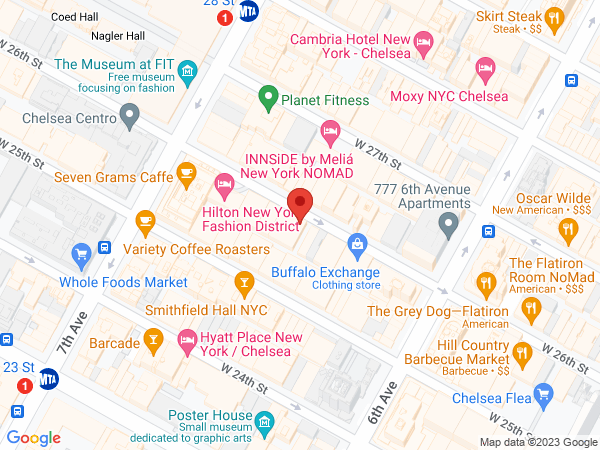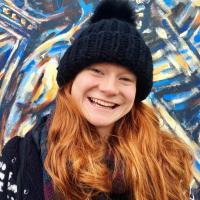Agalliu Lab

Location and Contact Information
- Phone 212-305-0323
- Fax 212-305-0241
The Agalliu laboratory is investigating several fundamental issues in the biology of the mammalian blood-brain barrier (BBB):
- The mechanisms that govern the development and maintenance of the BBB
- How structural components of the BBB are affected in diseases of the brain and spinal cord where barrier function is impaired including stroke, MS and PANDAS
- The role of Wnt signaling in repairing the damaged BBB in CNS diseases
Recent News:
How common infections can spark psychiatric illnesses in children
And why many doctors do not realise it
Source: The Economist
September 20, 2023
The Economist has covered some of Dr. Agalliu's Lab work on the immune mechanisms by which Group A Streptococcus infections trigger neuropsychiatric sequelae in the brain. [read article] Note: Accessing this article requires The Economist subscription.
Lab Members
Saptarshi Biswas
- Associate Research Scientist
Saptarshi earned his BS at Bangalore University, India, followed by an MS in biotechnology. He then moved to the U.S. in 2009 to earn his second MS in biotechnology in the Polytechnic Institute of New York University, during which he worked under Dr. Stephen J Small as a research assistant in Drosophila genetics.
After that, Saptarshi started his doctoral work under Dr. William J Brunken, first at the SUNY Downstate Medical Center and then at the SUNY Upstate Medical University. During his doctoral training, he studied how extracellular matrix components, especially laminins, affect retinal angiogenesis either directly or indirectly, by modulating cross-talk between invading astrocytes and resident microglia.
After earning his PhD in 2017, Saptarshi joined the Agalliu laboratory at Columbia University Irving Medical Center as a postdoctoral research scientist. His current work is primarily focused on the development and maintenance of the blood-retina barrier.
Project: Cellular and molecular mechanisms of blood-retina barrier formation and maintenance

Eti Muharremi, MD
- Associate Research Scientist
Eti Muharremi, MD, obtained his medical degree from the University of Medicine in Tirana, Albania in 2018. Subsequently, he embarked on a four-year neurology residency at UHC Mother Teresa. During his clinical training, he enriched his experience by participating in rotations at prestigious institutions, including the Jefferson Hospital for Neuroscience (JHN), where he contributed as a research affiliate within the neurovascular research group. In addition, he also shadowed at the Stroke Department at University of Pittsburgh Medical Center (UPMC) and Cooper University Hospital, further expanding his clinical expertise. Eti has been involved in academia since the start of his residency, holding lectures in neurology at “Aleksander Xhuvani University”. Eti joined the Agalliu lab as an Associate Research Scientist on September 2023. He is currently working with the photothrombotic model in stroke and his research focuses on novel approaches that target the BBB for a long-lasting repair to prevent post-stroke vascular cognitive impairment and dementia. He is also involved as a clinical coordinator in two clinical-related projects focused on PANDAS and TBI.

Uğur Akcan
- Postdoctoral Research Scientist
Uğur earned his BS in Biology at Marmara University, in Turkey. He then completed a Master’s degree in neuroscience at Istanbul University, where he studied immune system dysregulation in bipolar disorder.
For his PhD in neuroscience, Uğur joined the lab of Prof. Mehmet Kaya at Koç University, investigating effects of histamine on the blood-brain barrier. His dissertation, completed in 2021, focused on identifying distinct roles of histamine receptor subtypes in effects on BBB permeability.
In the Agalliu lab, which he joined as a postdoctoral research scientist in 2022.
Project: Pediatric Autoimmune Neuropsychiatric Disorders Associated with Streptococcus (PANDAS)

Adrian Chelminski
- Lab Manager / Technician
Adrian graduated from St. Francis College with a B.S. in Biology, after initially studying physics at Fordham University. During his undergraduate career, he was involved in a diverse range of research areas, including structural biology, cancer genomics, and ecology. His interest in neuroscience led him to attend the Columbia Access Neuroscience (CAN) program, where he learned of the Agalliu lab's work on the blood-brain barrier. Adrian joined the lab in July 2023 and is focused on projects relating to ischemic stroke and PANDAS.
Projects:
Pediatric Autoimmune Neuropsychiatric Disorders Associated with Streptococcus (PANDAS)
Mechanisms of blood-brain barrier dysfunction in ischemic stroke
Connor Monahan
- Graduate Student
Connor is a graduate student in the Integrated Program in Cellular, Molecular and Biomedical Studies. Connor graduated from Boston College in 2019 with a B.S. in Biochemistry. At Boston College, he studied the developmental effects of microdeletions causing intellectual disability using the model system Xenopus laevis.
Connor joined the Agalliu and Sulzer labs in August 2020 as a co-mentored PhD student. His current research project focuses on understanding the role of the immune response in the initiation and progression of Parkinson’s disease.
Project: Role of T cells in Parkinson's disease pathophysiology

Mary Claire Tuohy
- Graduate Student
Mary Claire is an MD/PhD student in the Neurobiology and Behavior Program. Mary Claire graduated from the University of Chicago in 2017 with a B.S in Biological Sciences and a specialization in Neuroscience. At UChicago she studied circadian regulation of the immune system in Dr. Brian Prendergast’s laboratory.
Following graduation, Mary Claire studied the role of MOG-specific B cells in EAE under the mentorship of Dr. Naoto Kawakami. Mary Claire joined the Agalliu and Hillman labs in Sept 2020 as a co-mentored student, where she first studied the neurovascular dynamics of cortical spreading depolarizations after acute brain injury. Her current work aims to understand the regulatory role of innate immune signaling on blood-brain barrier remodeling and restoration after ischemic stroke.
Project: Mechanisms of blood-brain barrier dysfunction and restoration in ischemic stroke

Aomeng Cui
- Graduate Student
Aomeng is an MD/PhD student in the Integrated Program in Cellular, Molecular and Biomedical Studies. She graduated from Columbia University in 2020 with a B.A. in Biochemistry and German Literature. During college, she worked in the lab of Dr. Michael E. Goldberg, studying visual processing within the lateral intraparietal cortex, and the lab of Dr. Wesley Grueber, studying sensory neuron development in Drosophila.
Aomeng joined the lab of Dr. Dritan Agalliu in August 2022. She is interested in developing in vitro models of the blood brain barrier, to use in understanding the microenvironment of neuroinflammation.
Project: Establishing stem cell-derived models of the blood-brain barrier

Esther Rotlevi
- Graduate Student
Esther is a PhD student in the Neurobiology and Behavior Program. She graduated from Queens College, CUNY in 2022 with a B.A. in Neuroscience and History. During her time at Queens College, she conducted research on the epigenetic basis of auditory discrimination learning in songbirds under the guidance of Dr. Carolyn Pytte. She further studied a psychiatric disorder known as misophonia characterized by sensitivities to certain auditory and visual triggers with Dr. Usha Barahmand.
Esther joined the Agalliu lab in August 2023 and is interested in understanding the mechanisms of blood-brain barrier dysfunction contributing to Alzheimer’s disease pathogenesis using in vivo mouse models.
Project: Mouse models of Alzheimer’s related blood-brain barrier dysfunction










